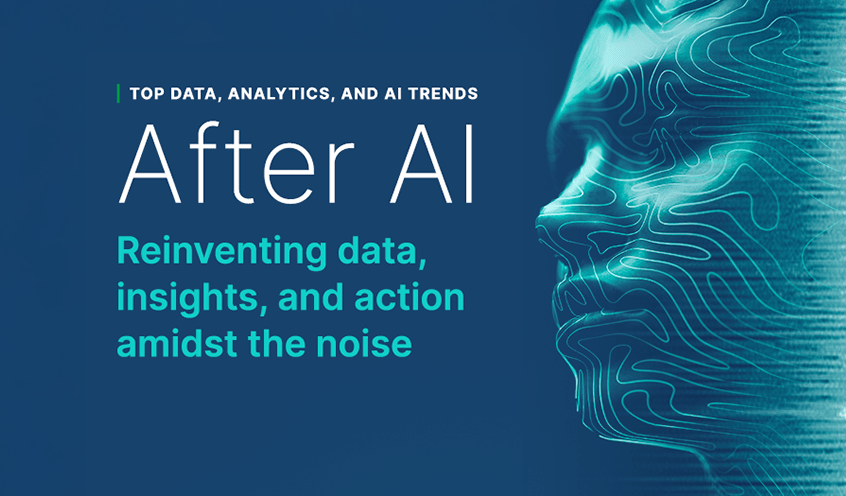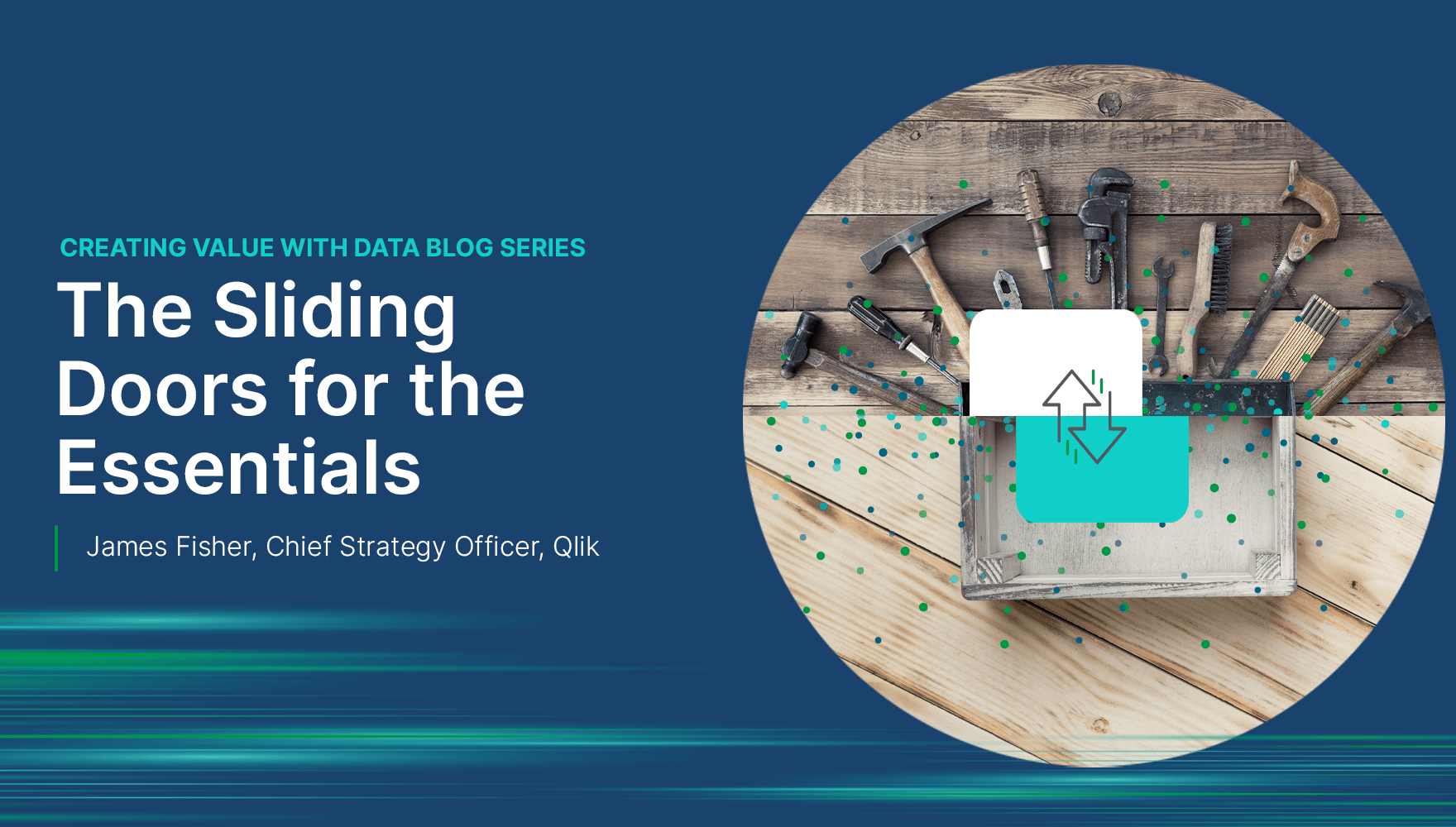As I have explored in this “Sliding Doors” blog series, identifying the right door to create value with data can prove quite challenging - and once that door is opened, the journey ahead can seem daunting. But what if there was a way to make that journey a bit easier? Maybe it’s time to get back to basics…
Who needs to hear this? Frankly, any organization that ticks at least one of these boxes…
☑ The volume of your data is rapidly expanding (and from more sources)
“Fun“ fact: 18 million gigabytes of data are added to the global sum every single minute of every day
☑ Your technology ecosystem is getting increasingly complex
“Fun” fact: the amount of outside software companies are tapping has skyrocketed in the last 10 years
☑ Your board is engaged in discussing your AI plans and applying pressure
“Fun” fact: 62% of CEOs have discussed AI at the board level
☑ Your competitors always seem a step ahead of you
“Fun” fact: 50% of organizations compete on data and analytics
☑ Your customers’ expectations continue to evolve
“Fun” fact: B2B companies that provide the best omnichannel experience are improving their market share by at least 10% annually
Anyone? Let’s dig in…
Wrong Door
So, if my premise is to advocate for a return to basics, what exactly is the wrong door for this scenario? Well, I am certainly not going to tell you that you should wait to adopt AI in your organization while you focus on these essentials. You should proceed and do it now: the benefits of AI when it comes to creating scale and differentiation have been well documented, and I believe in them. But only caring about AI at the expense of everything else – forgetting the essentials that matter – that’s the wrong door that could leave value on the table for the near term.
Let’s face it: as Gartner reminded us at their Data & Analytics Summit in London last week, building and deploying AI solutions is hard, with more than half of AI projects not deployed, and the average time to deploy models in production over 8 months. And as I covered in previous writings, AI is only good as the data it feeds on: if it’s garbage in, then it’s garbage out, not only preventing your organization from creating value, but also potentially putting you in breach of compliance with new regulations. So, banking everything on AI while forgetting some key essentials that matter to build a strong foundation for your business could prove costly...
Right Door
What are these essentials? I recommend five key elements for your data and analytics operations to help build a powerful foundation for AI and any other strategic deployments.
Are you feeding the right data to your analytics and AI models at the right time?
My first essential is make-or-break, whether it’s in service of a large AI implementation, or for any other use cases that feed on your data. You need the right data at the right time, and that data needs to be appropriately governed, or you will make the wrong decisions for your business. More specifically, if you train an AI model without first ensuring you have built a trusted data foundation, your model will run, and it will give you an answer… but it will be wrong. The right data foundation is simply the cost to entry for a successful AI journey, and in my experience, few organizations have this in place.
I explored this most recently in my last post, recommending six data principles for AI readiness.
Not to miss at Qlik Connect: The breakout session “Unlocking the Power of AI-Ready Data Quality: Strategies & Success Stories” featuring Julia Fryk from Waterstone MortgageCan you integrate current AI models with your analytics solution?
Another way to walk before you run with AI, is to connect any existing third-party AI model you are using to your analytics, essentially creating an augmented analytics experience with that model.
Our own customers can do this quickly by leveraging our new AI Accelerator program, where our services team helps them natively embed a large language model (LLM) right into a Qlik Cloud application, enabling augmented interaction using their structured data in context. This allows you to use AI to analyze your data to deliver new, better insights from your data.
Ultimately Qlik offers real-time integration with third-party data science and generative AI models such as Azure OpenAI, Amazon Comprehend, Anthropic, DataRobot, DataRobot, Amazon SageMaker, as well as connectivity for custom solutions built in languages such as R and Python. What makes our approach different is the combination of the Associative Engine and these third-party models working together to deliver interactive exploration and what-if analysis directly to business decision makers, with new calculations and content relevant to their selections as they click.
Not to miss at Qlik Connect: Our services booth in the Expo and the “Fast 15” session on our AI Accelerator program with Chris Kerr, Qlik’s Senior Director of Global Professional Services SolutionsHave you migrated at least a portion of your data operations to the cloud, for greater efficiencies?
If you aren't abstracting a portion of your architecture and overhead to a cloud service provider, you are missing out on proven savings from maintaining an on-premise architecture. Gartner estimates that by 2027, more than 50% of enterprises will use industry cloud platforms to accelerate their business initiatives, up from less than 15% in 2023.
At Qlik, we recently commissioned a study from Forrester on the total economic impact of Qlik Cloud analytics, and the results were clear, indicating clear ROI benefits for our customers. As a bonus, our open platform can be deployed through SaaS or hybrid multi-cloud environments, so you are not locked in to one cloud vendor. If you’re a Qlik customer that hasn’t made the move from our on-premise solutions to Qlik Cloud, be sure to take advantage of our incentive program and services to help you migrate most effectively.
Not to miss at Qlik Connect: The breakout session “Modernize your Business and Move to Cloud” featuring several customers that will share their best practicesCan you tell the right story from your data… with a little help from AI?
Pictures can tell a thousand words, but they have to be right: not all visualizations are equal, and sometimes the most beautiful viz is not the right one to tell the story most effectively. One of the top tips from Qlik’s resident expert Patric Nordström’s is to remember that the text around your chart is equally important as the chart itself, so leverage it to capture a story (and watch that title change dynamically in Qlik, as your data changes). As for the visual itself, Patric recommends trying different approaches, iterating, and seeing what works – and ultimately the most flexibility your analytics solution provides, the more you will be able to achieve. At Qlik, we’ve recently introduced some great enhancements to our visualization capabilities based on feedback from our customers.
And a little help from AI can go a long way, by providing readouts and interpretations of your visualizations so more people can take away the best insights… And going a step further, AI can generate visualizations for you. Qlik has been providing that capability for several years with Insight Advisor, helping generate new analytics within applications using natural language, and delivering answers to users through chat., and delivering answers to users through chat.
Not to miss at Qlik Connect: The breakout session “Top 10 Visualization Tips To Amplify Your Analytics Experience” with Patric Nordström, Director of Product Management at QlikAre you training your workforce to be data – and AI – literate?
Your essentials include your people too; in fact, they are a critical tool in your toolbox. After all, what good is a great data and technology ecosystem if your workforce is not empowered to leverage it most effectively? And now, you need both data literacy – the foundational knowledge to work with data effectively – and AI literacy – the ability to understand AI technologies, algorithms, and their applications. And AI can play a role here too, offering guidance and suggestions so users don’t have to be experts.
Not to miss at Qlik Connect: The breakout session “Data Literacy for AI and Data Drive Organizational Growth” by Angelika Klidas and Priscila de Jesus Papazissis Paolinelli
Watch the Door
If there is one twist for these sliding doors, it is this: just as you can’t forget these essentials to do AI, AI will also help you nailing these essentials…
For this blog series, I have explored one wrong door and one right door, but in reality, there can be a multitude of doors you could go through for any data, analytics and AI initiative. Which door you ultimately choose will also depend on the type of organization you are, the level of maturity with that initiative, as well as your overall business goals. No matter what, rest assured that Qlik is there to help support these goals, with a platform that provides the unique combination of breadth and depth, alongside choice and flexibility, that together allows you to proceed through the right door for you, at your own pace.














































